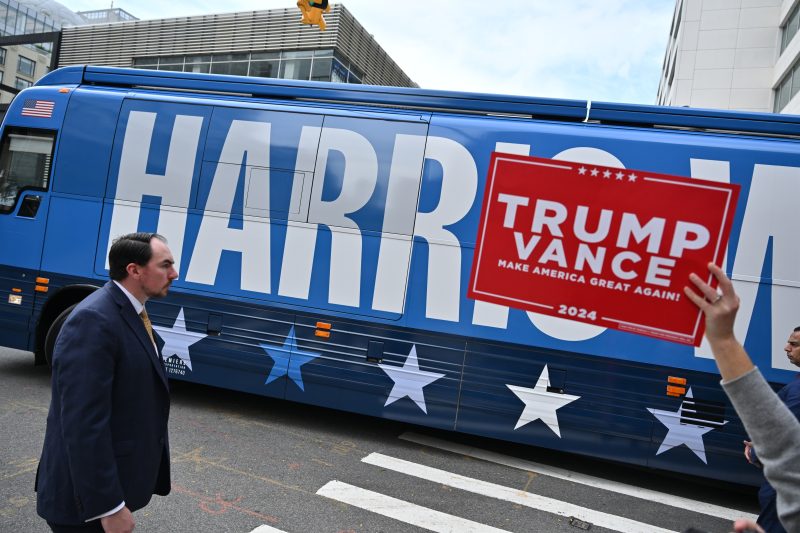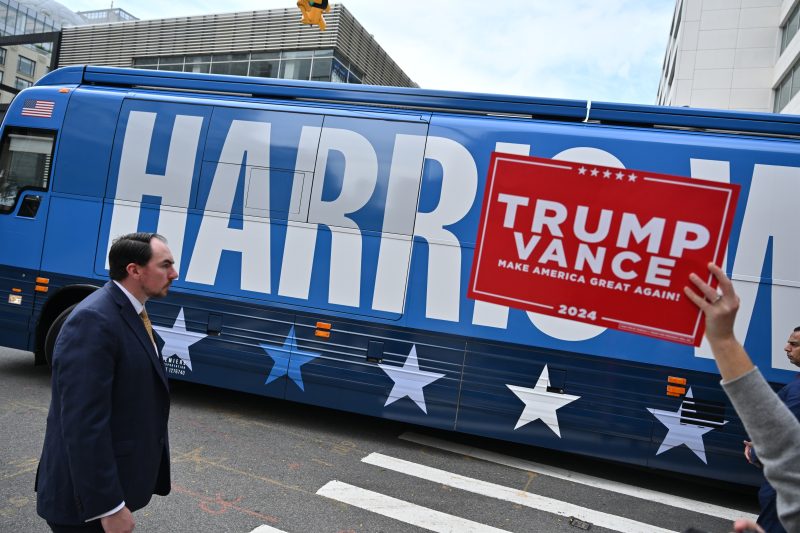
The White House has been controlled by a Republican for only four of the past 15 years. The current Democratic president has been part of the executive branch for the entire rest of the time, having served eight years as the vice president of the prior Democratic president. In each election over the period, including the one that brought the prior Democrat into office, the Democratic candidates have received more votes for president than have the Republican candidates.
Yet, in polling published this week by the New York Times, the Republican candidate for president is not viewed by voters as the candidate of change. Instead, a plurality of likely voters say that the Democrat — the vice president to the president who was vice president — better represents change than her opponent.
The reason why is fairly obvious, as we’ll explore in a moment. We should contextualize this unusual dynamic more broadly, though, by noting that, for all of the ways in which this election looks like those that preceded it, it is unique in striking and perhaps determinative ways.
So why is Vice President Kamala Harris (slightly) more likely to be seen as the candidate of change? In part it’s because she is not President Joe Biden. When Biden was on a glide path to his party’s nomination earlier this year, he was underperforming his position in the polls relative to 2020 specifically because he was Joe Biden, unpopular incumbent.
While Harris is obviously tied to Biden in the way that Biden was tied to the president under whom he served, Barack Obama, Harris represents a literal change for the party. She also represents a figurative change: younger (especially in the context of national politics), a woman, a person of color.
More importantly, though, she’s running against Donald Trump. Just as Joe Biden did four years ago. And just as the Democrat endorsed by Barack Obama did four years before that. It is hard to be the figurative candidate of change when you are literally the same candidate who’s been on the ballot twice previously. It’s particularly hard to do so when you’ve actually been the president!
We’re used to presidential contests being a battle between change and the status quo. Generally, the former term is adopted by the party out of power. But Trump has never been a candidate of change, not really. He has, instead, been the candidate of a different status quo, one that predates particular manifestations of change. “Make America great again” is ostensibly about change but really about reversion.
So, despite being out of power, it’s easy to view him as the candidate of the same-old, same-old. And Harris, despite being in power, can relatively easily present herself as different, different from Trump and even different from her boss.
There’s another weird dynamic at play in the presidential race. To highlight it, though, consider a social media post from Democratic Maryland senatorial candidate Angela Alsobrooks.
Maryland’s U.S. Senate race is currently TIED. This race WILL decide Senate control in November, which means we’re running out of time to help Angela take the lead.
Will you chip in $10 to defeat Larry Hogan and defend our razor-thin Democratic majority?
— Angela Alsobrooks (@AlsobrooksForMD) September 6, 2024
The race is tied, the post suggests. Alsobrooks has the support of 46 percent of voters, as does her opponent, former Maryland governor Larry Hogan (R). It’s a moment, therefore, in which donations are more urgently needed than ever.
There was a poll that showed the margin indicated in the post above, displayed to users as an ad this week. That poll was conducted in mid-August, by a pollster who also does polls for Trump. In every other poll since (and many prior), Alsobrooks has a comfortable lead, as one might expect for a Democratic candidate in a deep-blue state.
But people don’t give money to candidates who are likely to win. They give money to candidates who are in close races (or, to the chagrin of party committees, to doomed candidates running against polarizing opponents). So Alsobrooks uses this one close poll to generate the sense that her election is anything but inevitable.
This is how things usually work. It is not how things work for Donald Trump.
Trump insists — regularly and fervently — that he’s got this campaign in the bag. He insists that he already has the votes he needs. His campaign has outsourced most of its voter turnout efforts, a sign that this is not the valuable, core element of his effort that most campaigns would consider it to be.
Why? Because he generates urgency in a different way. His campaign (and the Republican Party that’s led in part by his daughter-in-law) is focused on amplifying the idea that resources are better deployed in trying to uproot and prevent illegal voting. That there is no significant (much less rampant) illegal voting in American elections does not dissuade Trump’s approach any more than it did in December 2020. He doesn’t insist that the election is close, because that implies that he’s not enormously popular. Instead, he insists that the election is at risk from Democrats attempting to steal it. That’s what he wants his supporters to be motivated by.
Trump introduced a new slogan for this election cycle: “Too big to rig.” This is rooted in a bizarre idea that emerged after his 2020 loss, that Democrats were unable to steal the election in certain states because so many votes had been cast for Trump. So what Trump demands from his supporters is that they turn out so heavily that it’s impossible once again for Democrats to subvert that enthusiasm. He’s having his cake and eating it, too: Insisting on his own popularity even as he suggests that he isn’t popular enough to become president.
There’s not much use by now in noting that Trump is an unusual candidate who approaches things in an unusual way. But even nine years after he first became a national candidate, he still manages to upend expectations and traditional patterns of politicking.
With the end result of getting fewer votes than Hillary Clinton, fewer votes than Joe Biden and, at this point, less support than Kamala Harris.

